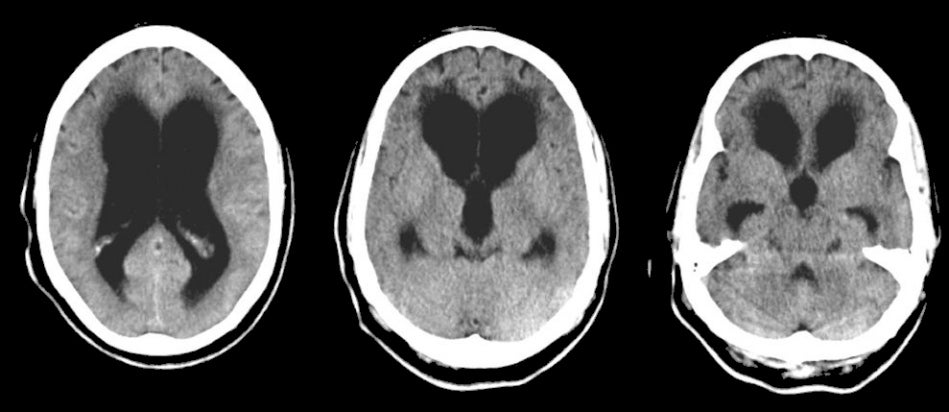
|
A 47 year-old woman presented with confusion, headaches and gait imbalance. She had meningitis as a child. |

![]()
![]()
![]()
| Non-Communicating Hydrocephalus: Axial CT scans. Note the
prominent enlargement of the lateral and third ventricles in the
setting of a normal sized fourth ventricle. This pattern is one of
non-communicating (obstructive) hydrocephalus, which occurs from
impaired drainage through the cerebral aqueduct which connects the
third and fourth ventricles. This picture differs from communicating
hydrocephalus wherein all the ventricles are enlarged. Note also
that the sulci are relatively effaced (i.e. small), which excludes
the possibility that the enlarged ventricles are simply due to
cerebral atrophy (i.e., hydrocephalus ex vacuo). In this case, the hydrocephalus likely
resulted from scarring in the cerebral aqueduct as a consequence of
her
meningitis as a child.
Hydrocephalus is recognized as enlarged ventricles out of proportion to the amount of cerebral atrophy. Non-communicating (obstructive) hydrocephalus occurs when the ventricular system is not in continuity with the subarachnoid space. Most often, the site of the blockage in non-communicating hydrocephalus is at the cerebral aqueduct, but rarely can occur at the foramen of Monro, the third ventricle, or the outlet of the fourth ventricle. Acute non-compensated, non-communicating (obstructive) hydrocephalus is a neurosurgical emergency as the non-compensated hydrocephalus results in a progressive increase in intracranial pressure, which if left unchecked will result in herniation and brain death. It is potentially treatable by shunting. |
Revised
11/23/06
Copyrighted 2006. David C Preston